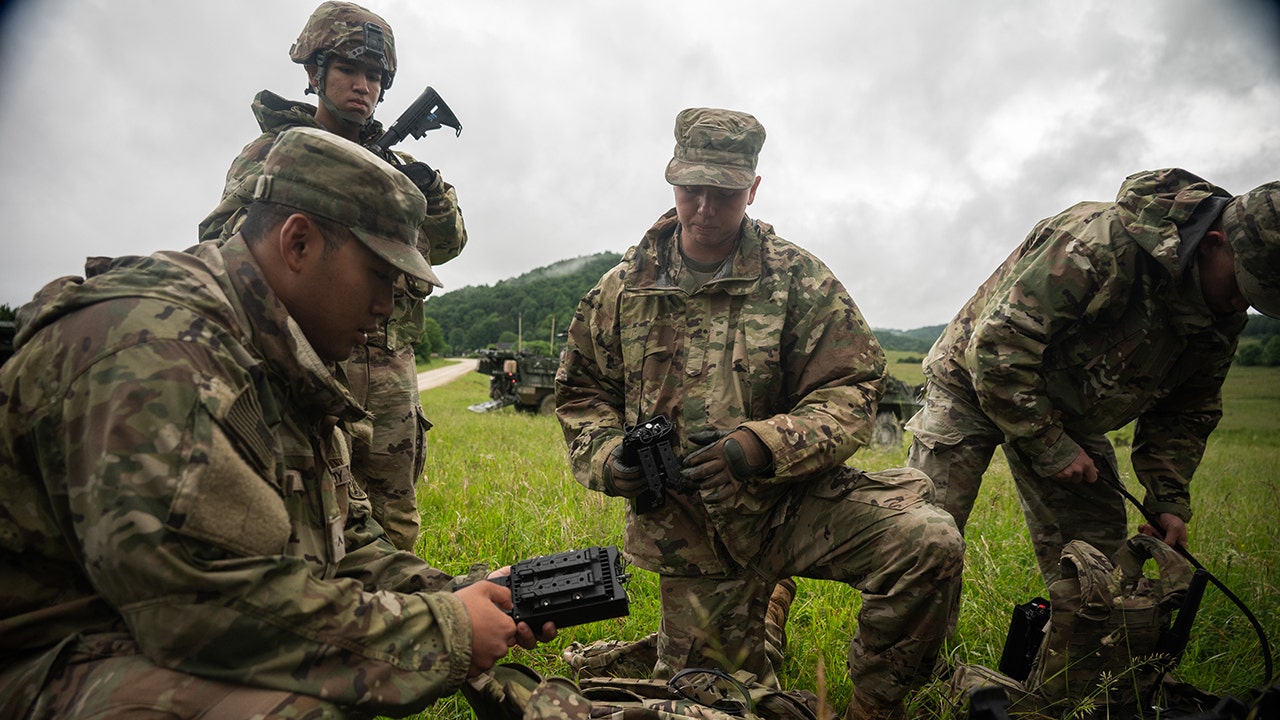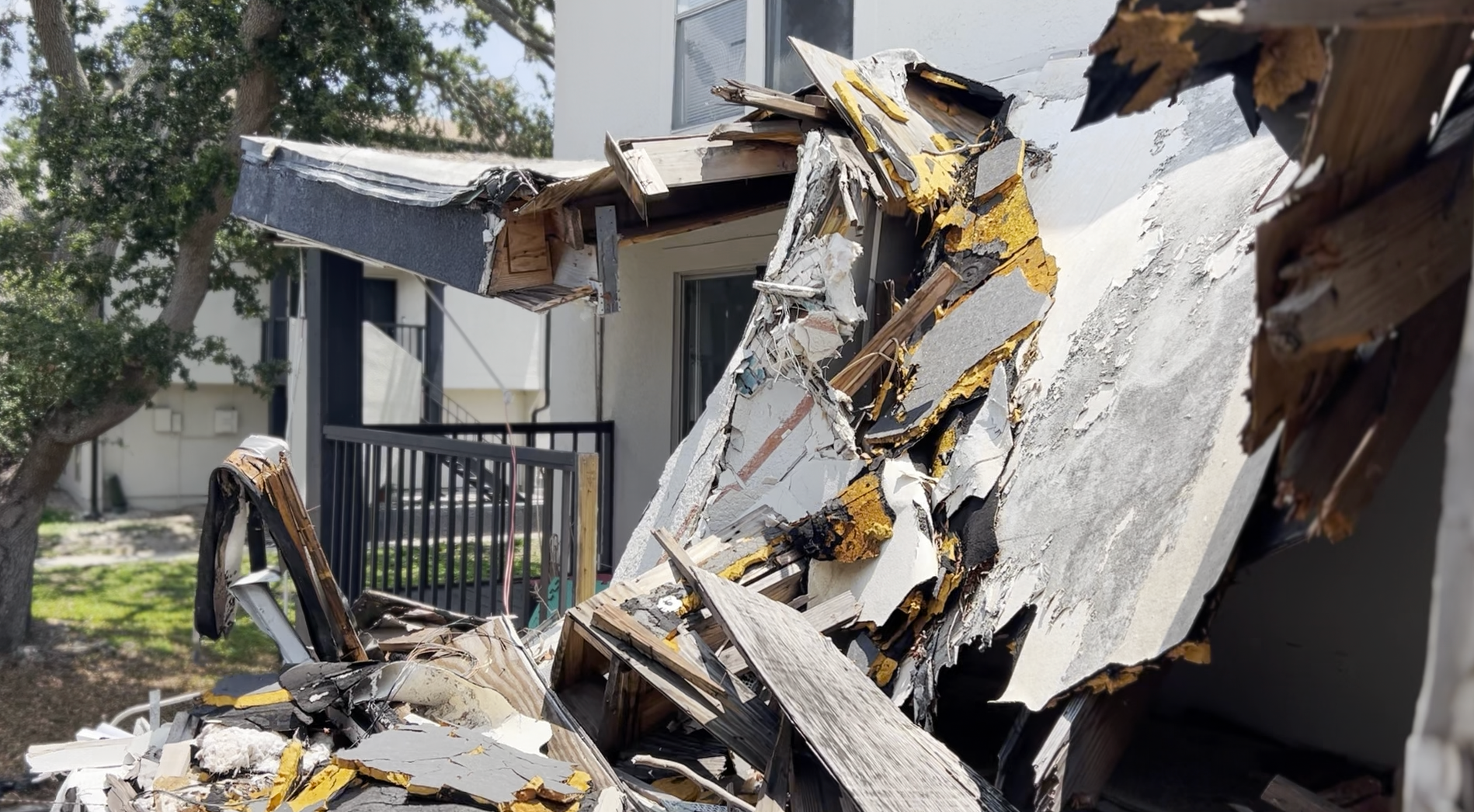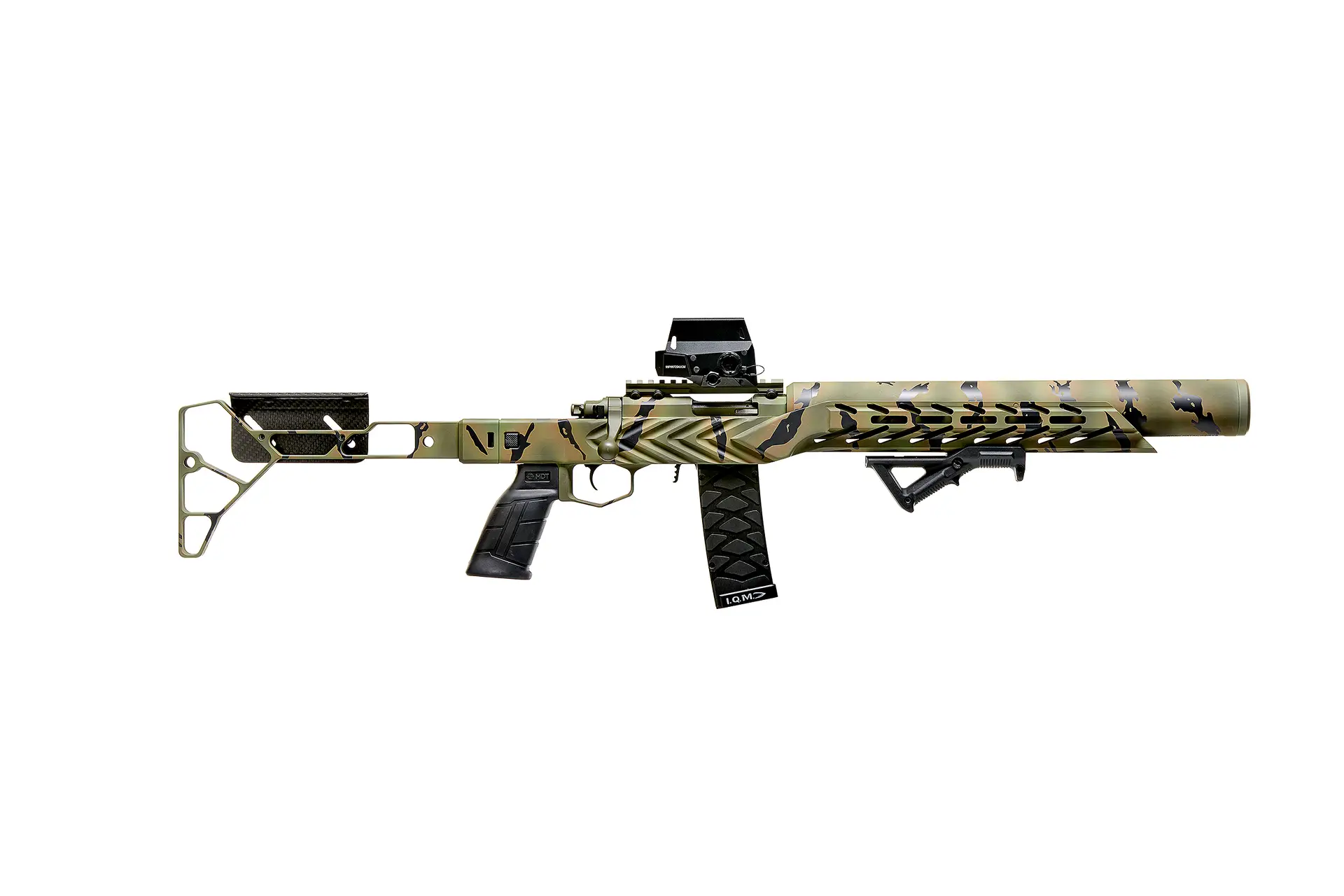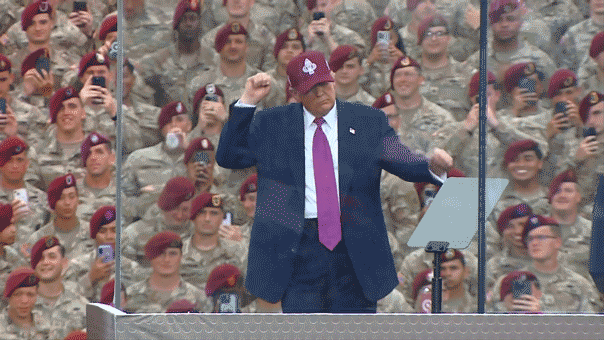The pistol caliber carbine (PCC) market has experienced consistent growth and significant momentum over the past decade. With no signs of slowing down, the market still feels somewhat stagnant. It’s largely dominated by 9mm AR variants, with a few notable offshoots like the Scorpion and MPX. We rarely see much caliber deviation. So, driven by my fondness for the unusual and interesting, I delved into the world of magnum PCCs.
Magnum PCCs occupy a peculiar niche; most are uncommon and rare, and one of the coolest was never produced in large numbers. Their prevalence varies depending on the specific configuration you’re seeking. Compared to most other PCCs, magnum PCCs often make a lot more sense.
They allow you to take fast, hard-hitting, and often flat-shooting cartridges, and make them faster, easier to aim, and more accurate overall. These firearms are still subject to NFA restrictions, meaning we often contend with barrels longer than ideal. Honestly, most of these would perform best with a 10-inch barrel, but that’s not a common offering.
Let’s explore some of these magnum PCCs, categorizing them from most to least common.
Henry Big Boy X
Many people overlook the fact that numerous lever-action rifles are, in essence, PCCs. Lever-action chambered in handgun rounds represent some of the earliest PCC designs. Henry, a leading lever-action company today, offers the Big Boy X series, which includes some of the most common magnum PCCs. The Henry Big Boy X is available in .44 Magnum and .357 Magnum.

The Big Boy X series ventures into the realm of “tactical” lever actions, more or less. While not overtly tactical, they incorporate black polymer furniture, high-visibility sights, a few M-LOK slots, and a Picatinny rail. The designs remain fairly simple and classic, eschewing the traditional blued finish and beautiful wood.
For residents of states with strict firearm regulations, it’s hard to beat the Big Boy X series for home defense. If owning a semi-automatic rifle is challenging, the Big Boy X provides substantial close-range power. Additionally, the .44 Magnum variant can serve as an excellent brush-hunting rifle. Its short barrel and high-visibility sights make it quick to maneuver. Furthermore, it’s fully red-dot sight-ready, which further enhances the rifle’s speed.
The Ruger Deerfield and Deerstalker Carbines
Over the years, Ruger produced two magnum PCCs in .44 Magnum. They differ in design and were built to be light, handy, close-range hunting rifles. Both are now out of production but are typically easy enough to find on the used market, provided you’re willing to pay a premium. The Deerstalker, also known as the Ruger Model 44, was the first.
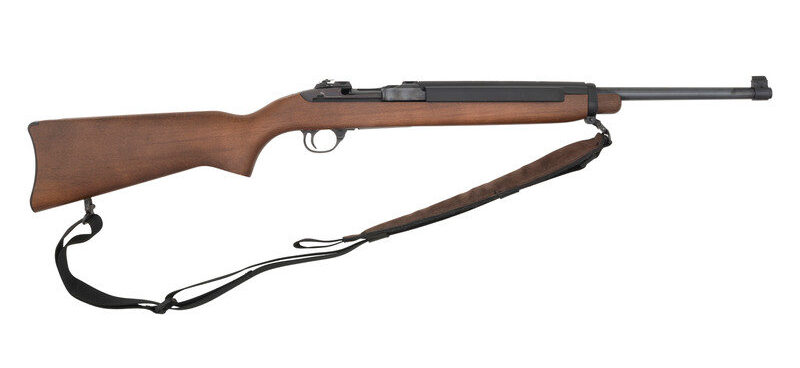
The Model 44 was fed from a four-round tubular magazine and featured an 18.25-inch barrel. It weighed just under six pounds and utilized a gas-operated rotating bolt design, not dissimilar to the Mini-14. The Deerstalker rifles were generally well-regarded but had issues cycling lead ammunition.
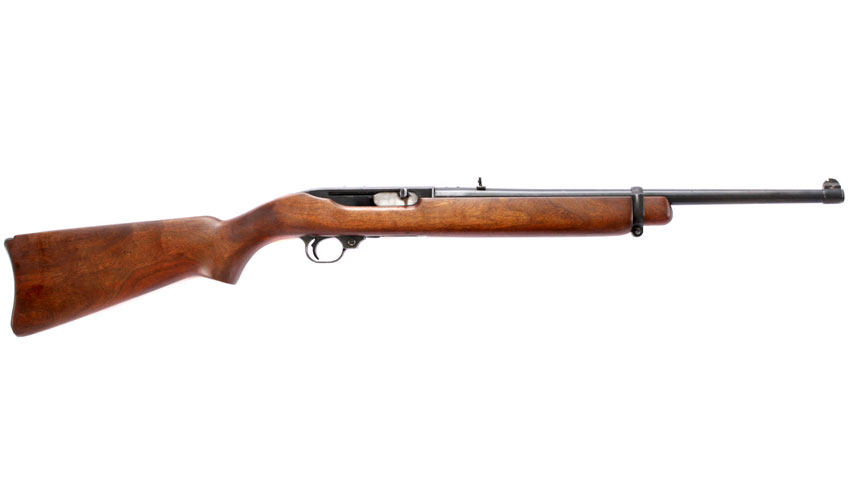
The Deerfield carbine was the second option, produced from 2000 to 2006, and was slightly more modern. It fed from a four-round rotary magazine, much like the Ruger 10/22. The Deerfield had an 18.5-inch barrel and weighed 6.25 pounds. It’s a sweet little gun, and aftermarket companies have even developed extended magazines with up to ten-round capacities.
Uberti Cattleman Revolving Carbine
Revolving rifles are undeniably quirky, unusual, and rare. A fun historical note: they were the first repeating rifles fielded by the United States military, originally designed by Colt. Revolving rifles were always a somewhat eccentric category but offered repeating firepower in an era before lever-action rifles became prevalent. Uberti, an Italian company renowned for its Old West replicas, produces one of the few modern options.
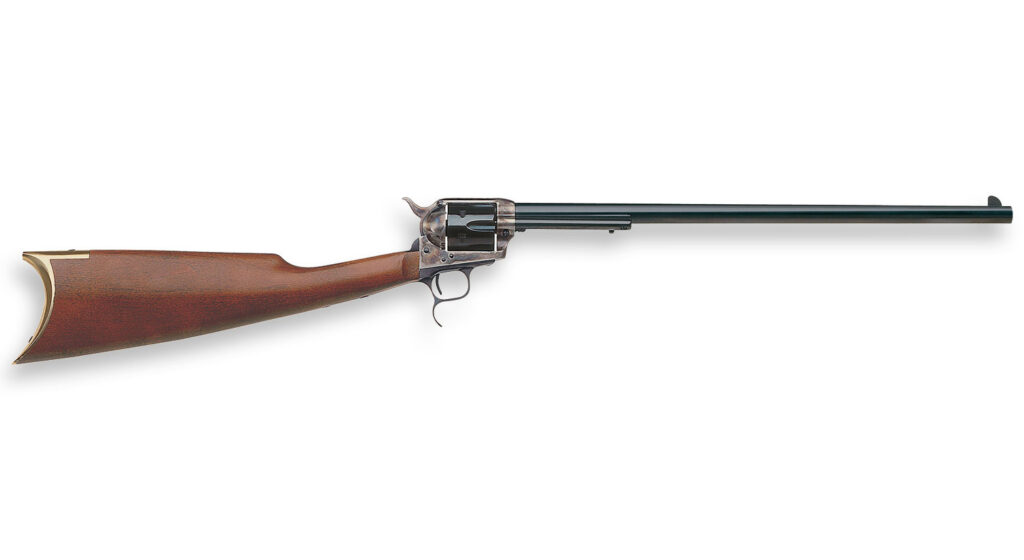
The Uberti Cattleman Revolving Carbine features an 18-inch barrel and is chambered in .357 Magnum. They also produce versions in .44-40 and .45 Colt. The gun holds six rounds, uses a single-action trigger, and has open sights. It resembles a classic revolving carbine with a cartridge conversion but incorporates a more modern design that enhances safety and durability.
These guns can be tricky to shoot. You cannot place your support hand forward of the action, but the rifle is fairly light, so keeping both hands rearward isn’t overly difficult. This compact firearm has open sights but appears to lack any method for attaching an optic. It’s certainly a fun gun, though not the most practical.
Wren Metal Works Integrally Suppressed Bolt Action .44 Magnum
This firearm was simply too cool to omit from the list. It starts as a Ruger M77/44, a bolt-action .44 Magnum rifle. Ruger, it seems, has a penchant for producing .44 Magnum PCCs. The specialists at Wren Metal Works then take the M77/44 and integrate a suppressor that surrounds the barrel.

The end result is a “one-stamp rifle” (meaning it only requires one NFA tax stamp for the suppressor) that can quietly propel large, fast-moving, heavy chunks of lead. It’s easy to mount an optic, and a low-powered option would make this an excellent hunting rifle in my area, which consists largely of dense woods and brush. Wren Metal Works offers two models: the standard and the Custom.
The Custom features the Wren Metal Works Chassis, providing a more tactical option. It’s a precision bolt-action design with an M-LOK handguard, a folding stock, a built-in Picatinny optics rail, and an AR-style grip. Both rifles are expensive, low-production items, but holy hell, I want one!
The Ingram Durango Carbine
Here lies our rarest magnum PCC. In fact, there appears to be only one, produced as a prototype and later sold by Rock Island Armory. Gordon Ingram designed the gun, and several Durango carbines were created, including 9mm and .45 ACP variants, but only a single .44 Magnum Durango carbine.
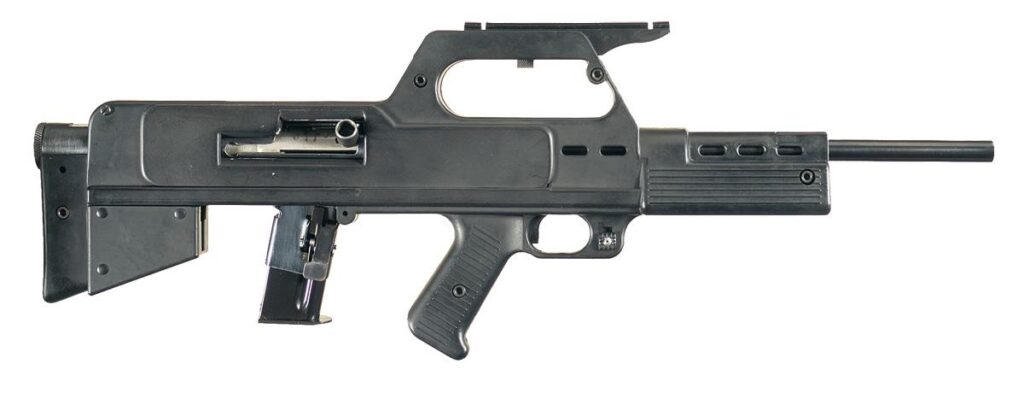
Not only is it a .44 Magnum carbine, but it’s also a bullpup. This particular firearm uses the old R-Line Bullpup conversion stocks, which accommodate a standard action and barrel. It feeds from .44 Magnum Desert Eagle magazines. The type of action the gun uses isn’t clearly specified.
The other Durango Carbines were blowback-operated, but they were also chambered in 9mm and .45 ACP. A blowback-operated .44 Magnum seems like a very daunting and potentially unsafe design. Perhaps that’s why this gun remained a one-off prototype. However, most of the Durango designs seem to have been one-off prototypes.
We Need More Magnum PCCs
I’d love to see more magnum PCCs, especially semi-automatic models. I understand that designing for rimmed cartridges can be challenging, but I’m perfectly content with a tubular magazine for my magnum PCCs. However, it seems they were never big sellers, or Ruger would likely still be producing them today. That said, I’ll keep my eyes open and my hopes high.
Read the full article here
